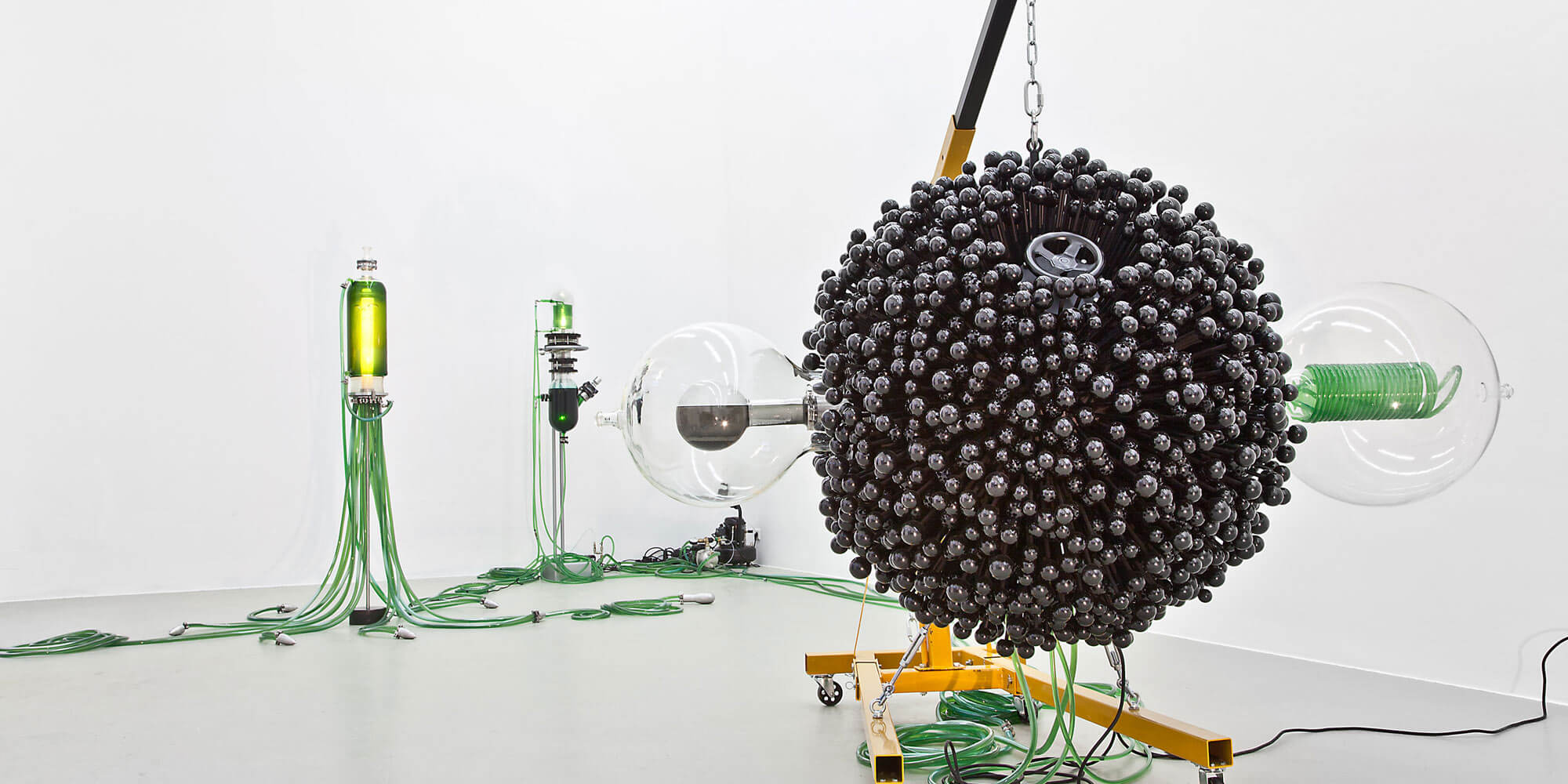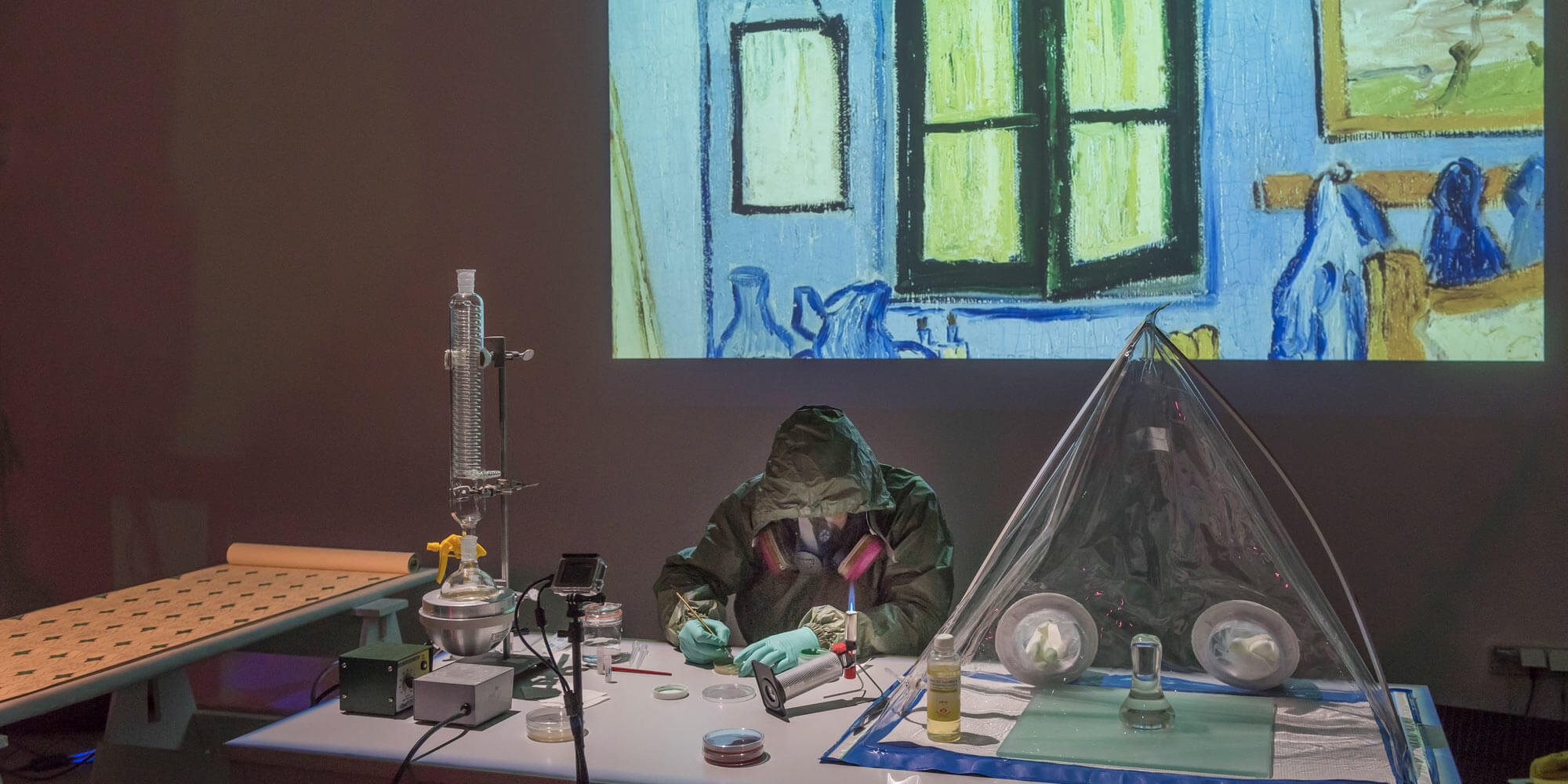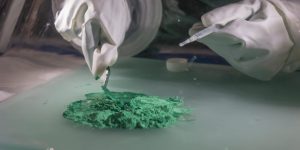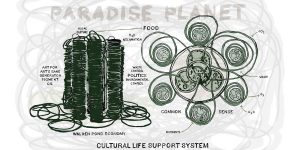Sampling Color – Farbe Vermessen
What is “green”? Are we “green”? And is it the vegetative world at all? With monumental biotechnical installations, olfactory portraits of trees and the chemical re-enactment of historical toxic pigments, this garden, presented by Muffathalle Munich and curated by Jens Hauser, initiates a series of events under the label “gREen” that fosters debates on climate politics addressing the tension between art, nature and science. The installations (7.-16.9.) by Thomas Feuerstein, Agnes Meyer-Brandis and Adam Brown, as well as an international symposium (9.11.), materially challenge the increasingly uncritically accepted symbolism of “green” as a RE-mix and RE-evaluation of contradictions and paradoxes. Is “green” so important to humans because naturalness and artificiality, the healthy and the toxic, the hoped for and the lost oscillate in it?
Chlorella algae are the protagonists of Thomas Feuerstein’s large photo-bioreactors and meandering hoses, harvested to be metabolized into beverages, pigments, bioplastics or even charcoal. Is black the new green? In Agnes Meyer-Brandis’ works, trees are no longer just photosynthesizing green carbon sinks, but complex organisms with their own identities, which communicate with one another thanks to their specific gas emissions—or with visitors, if they want to experimentally put on a smell costume. Last but not least, Adam Brown’s neo-alchemical live laboratory reminds us that, in art, “green” is often represented nature as the most poisonous of colors.
Credits
Muffathalle Munich
Helmholtz Zentrum München, Research Unit Environmental Simulation (EUS) Universität Innsbruck, Unit of Environmental Engineering Medizinische Universität Innsbruck Michigan State University Bridge Art, Science and Humanities Program









